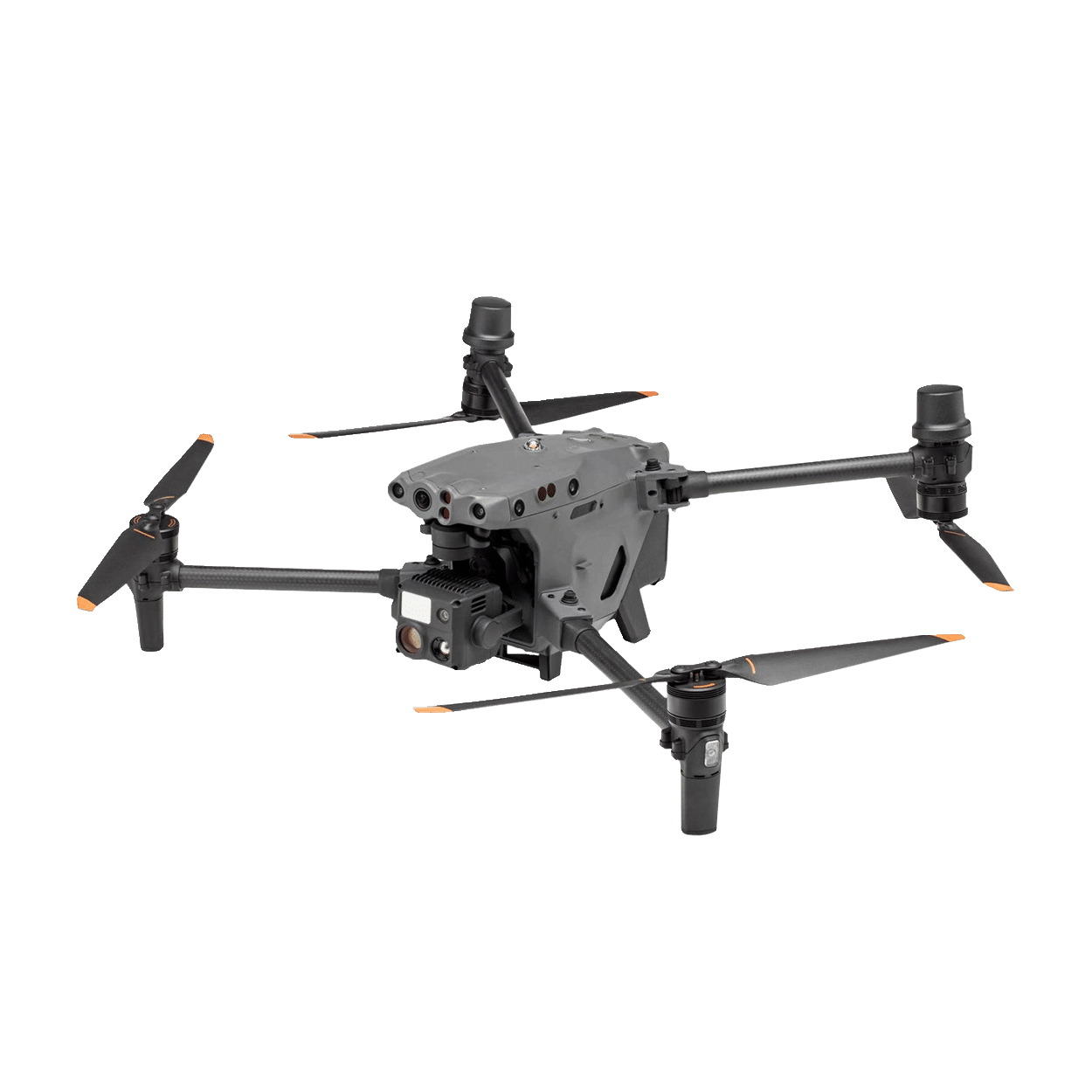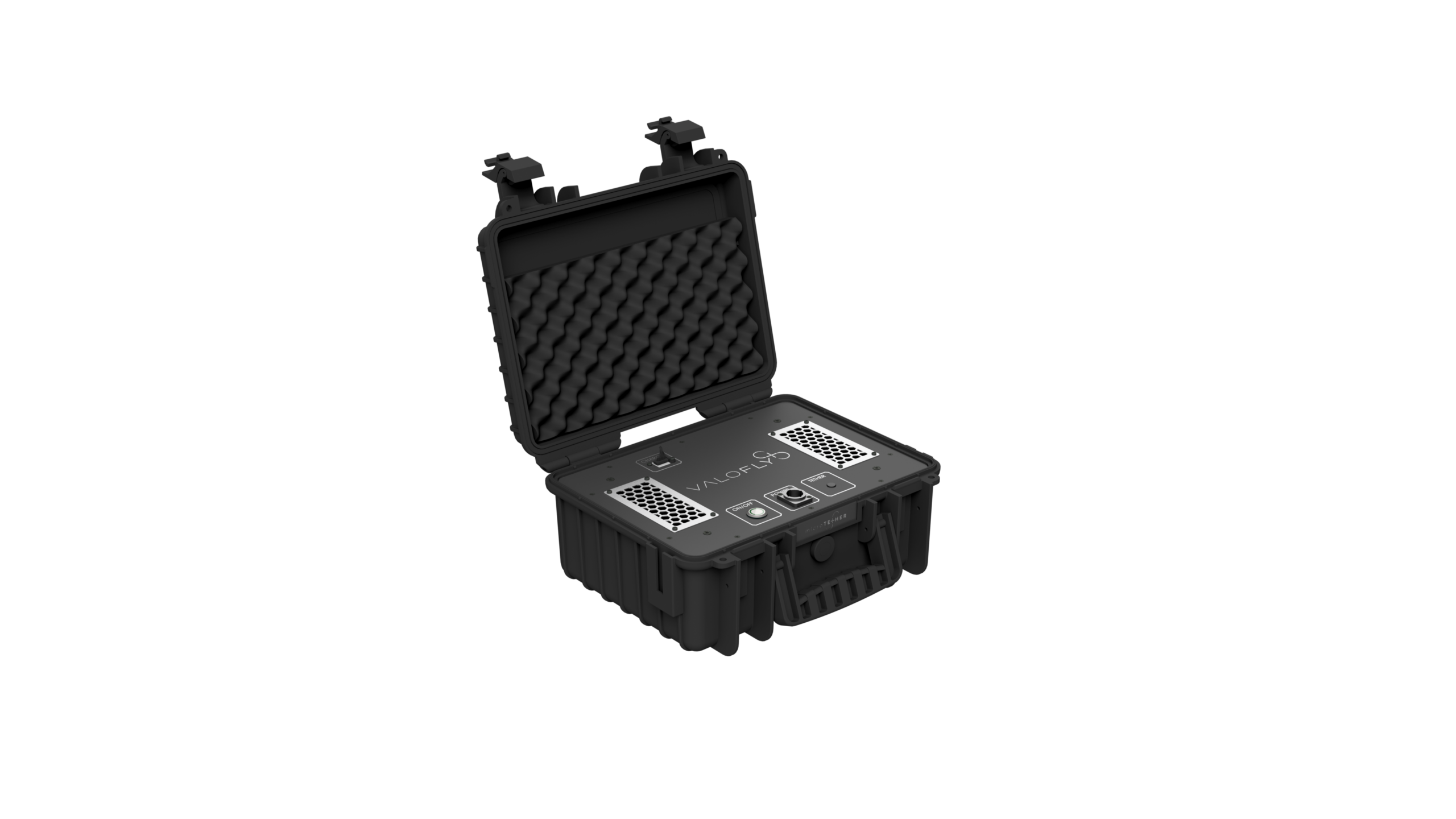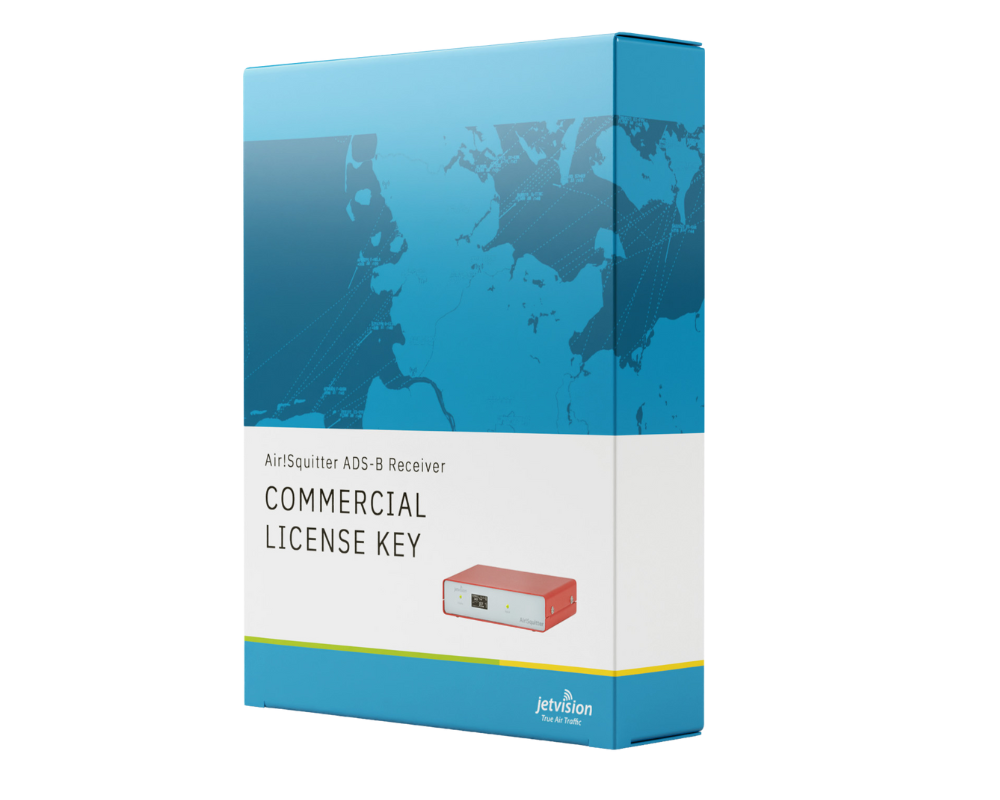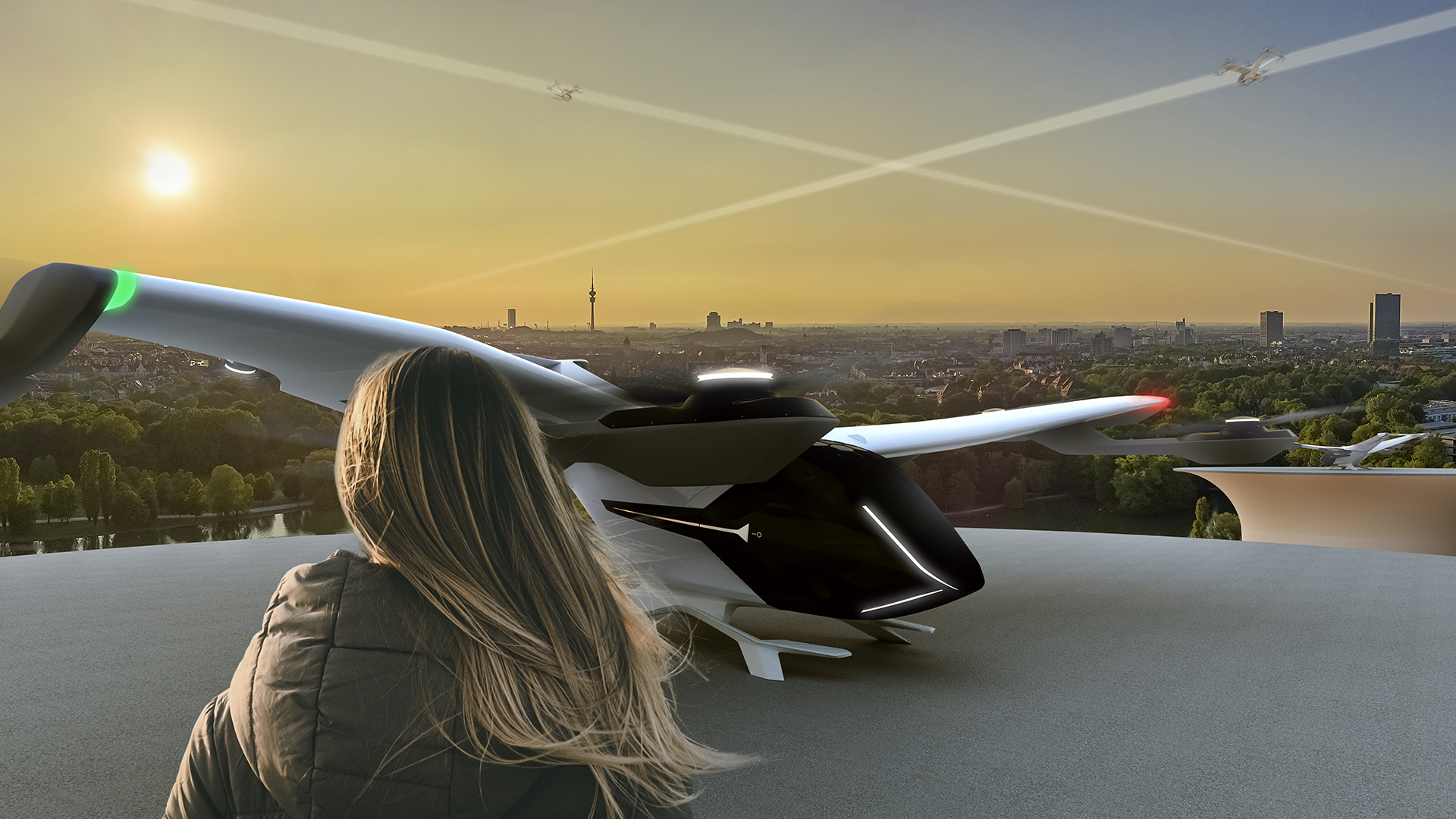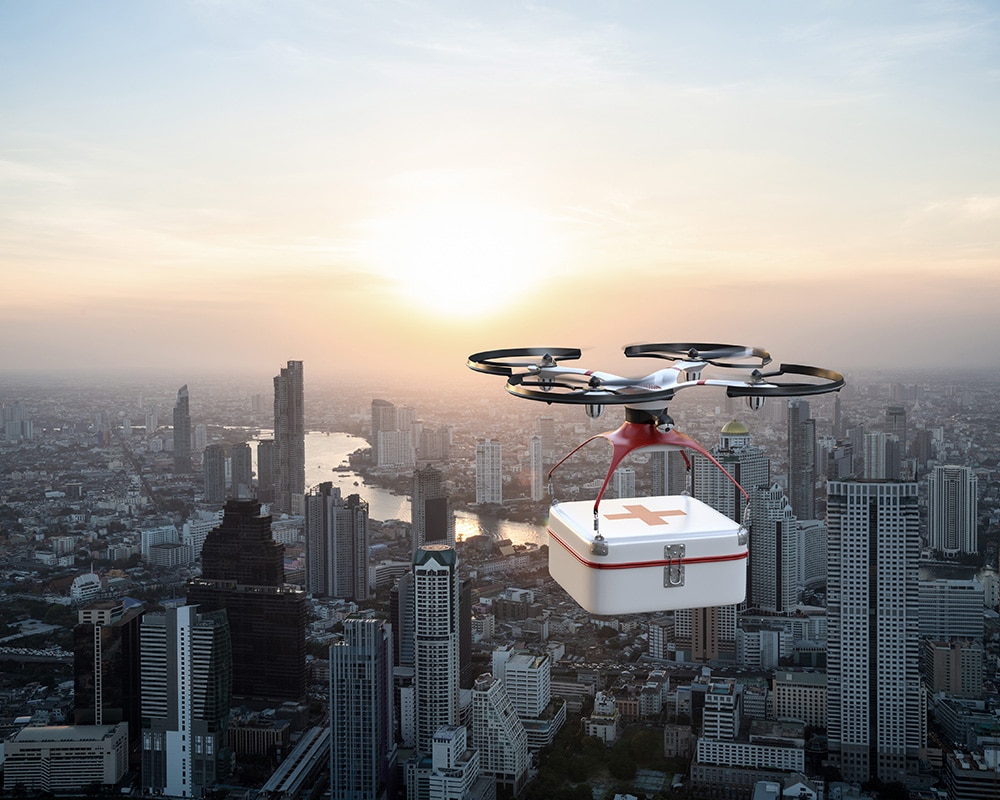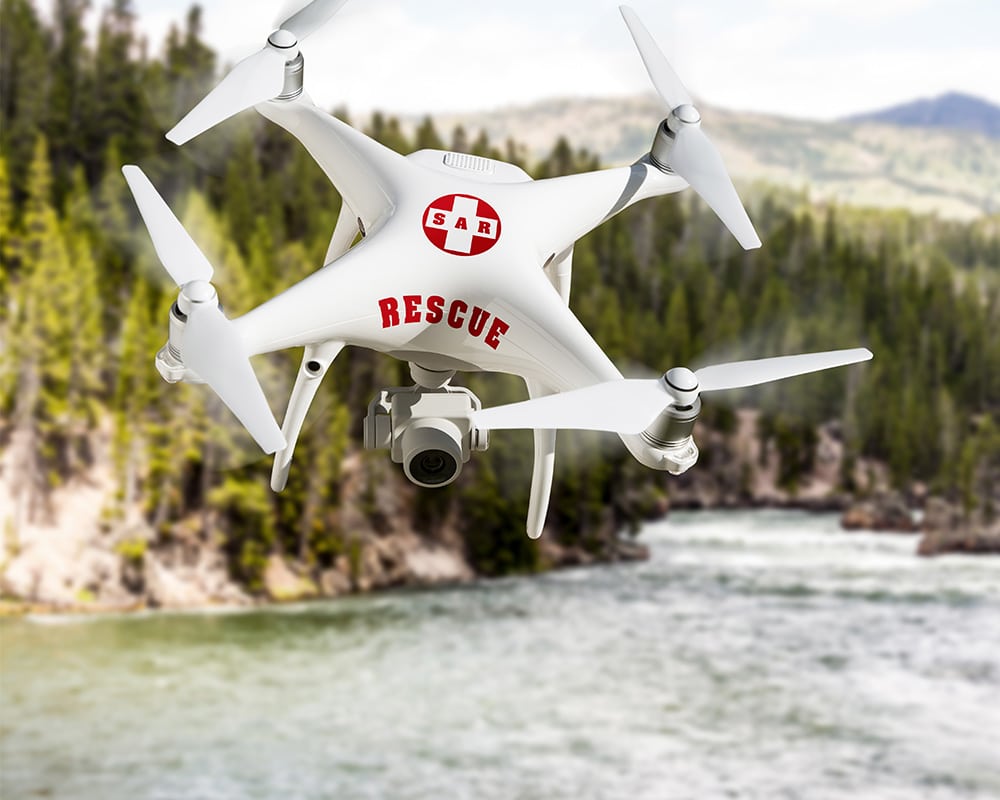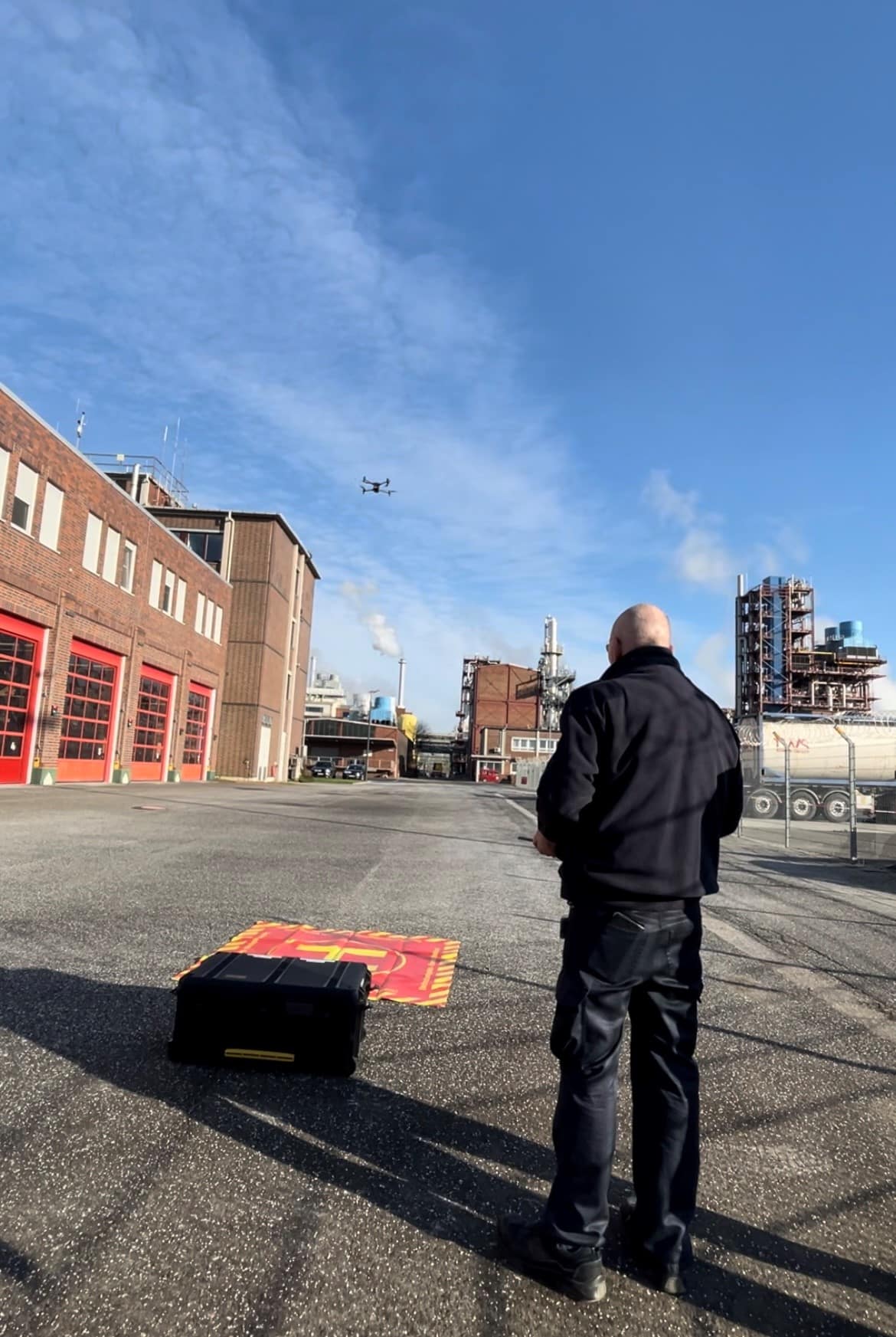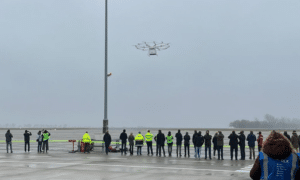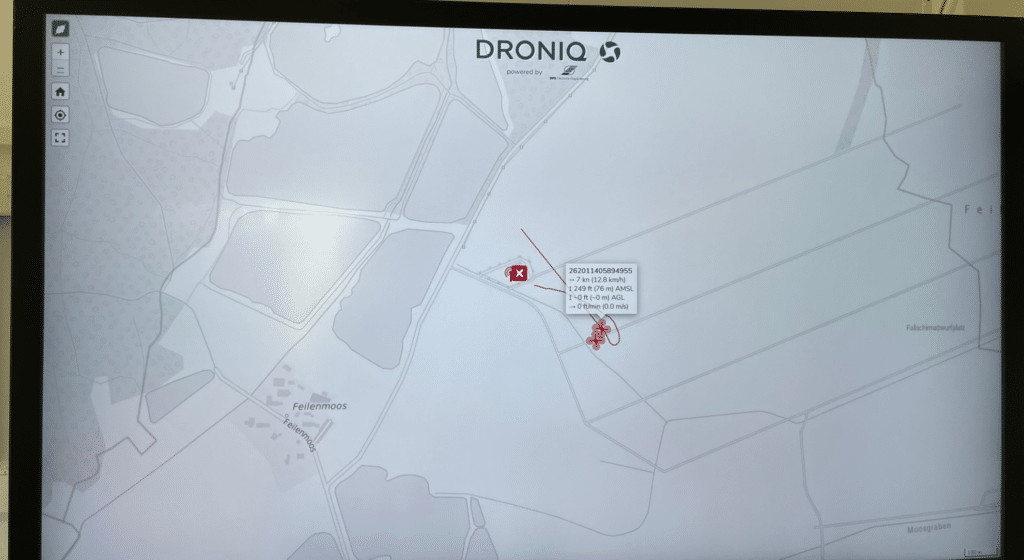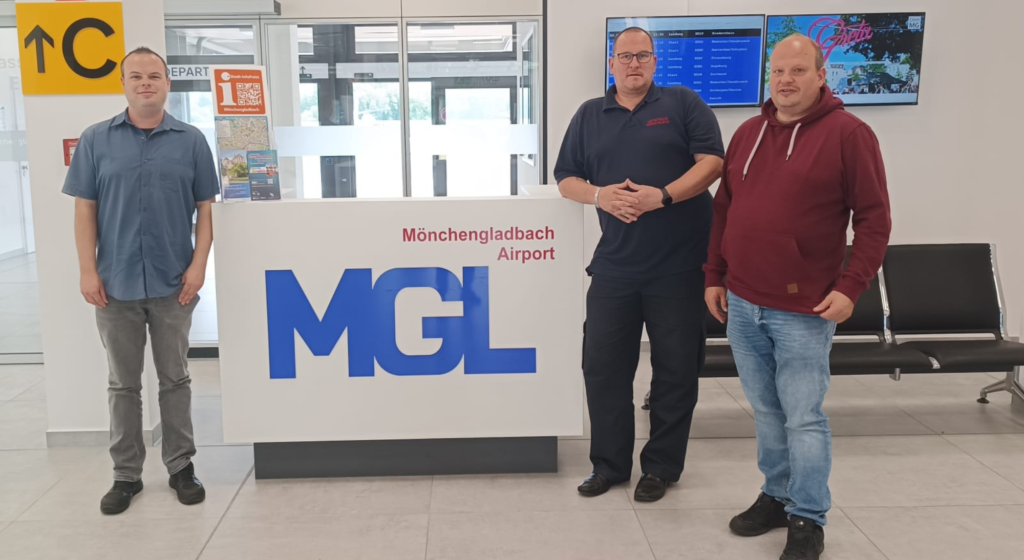Since January 2022, the RescueFly project team has been working on solutions for drone-based water rescue. In the future, automated drones will support the rescue forces in their work and provide the operations control center with precise data to ensure optimal and rapid assistance. Testing is taking place in the Lusatian Lakeland, where the project team met last week for an expert workshop in Lauta and our colleagues Lara Krampe and Emily Pfister were there on site.
For these autonomous rescue flights, Droniq ensures the safe and automated integration of the drone into the airspace with the help of the traffic management for drones (UTM). An important prerequisite for the UTM is the associated hardware: In addition to the transponder for locating the aircraft (Hook-on-Device - HOD), this also includes the ground sensor technology: For this purpose, our colleague Lara Krampe was on site at the beginning of December to install sector antennas (Fixed Ground Station - FGS & Omidirectional Ground Station - OGS) as a stationary system for ground-based air situational awareness.
Project participants:





